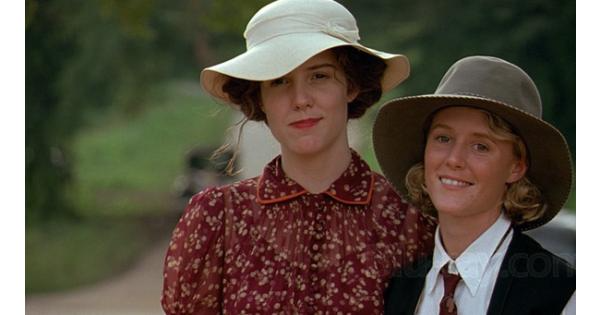
The power of silent details
In the cinematic world, some films dazzle with grand special effects or dramatic emotional climaxes. But Fried Green Tomatoes stands apart — a film that doesn’t rely on spectacle or loud declarations, yet touches viewers with subtle, meaningful details.
It’s the tiniest pieces — like Ruth’s embroidered handkerchief, Idgie’s honey jar, the old wooden bridge, or a plate of crispy fried green tomatoes — that together compose a vivid mosaic of love, loss, resilience, and remembrance. These details never feel random; each one carries its own quiet significance and contributes to a deeper emotional narrative.
The embroidered handkerchief – a symbol of memory and devotion
One unforgettable detail is the handkerchief Ruth gives to Idgie. At first glance, it’s a simple piece of cloth, but in the deeply conservative South of the 1920s–30s, it becomes a poignant token of unspoken love and loyalty.
Embroidered with Ruth’s name, the handkerchief is more than a keepsake — it’s a silent promise. When Idgie holds it, there’s no dramatic music or tearful confession, just a quiet gaze and a soft grip. Yet in that moment, the audience understands that their bond runs deeper than words can convey.
The handkerchief reappears throughout the story, tying together the past and present, as a thread of continuity that keeps Ruth close — even long after she’s gone.
Fried green tomatoes – more than just a Southern dish

The film’s title, Fried Green Tomatoes, points to a dish that’s more than a regional delicacy — it’s a recurring detail that becomes a symbol of friendship, community, and nostalgia.
When Ruth and Idgie open the Whistle Stop Café, fried green tomatoes aren’t just food — they’re comfort, connection, and inclusion. The café becomes a haven where people of all walks — Black and white, young and old, homeless and well-off — gather and share. In a racially segregated South, this act of quiet resistance and unity speaks volumes.
Later, when Evelyn bites into a piece of fried green tomato given to her by Ninny, the flavor becomes a trigger for transformation — not just of memory, but of self. It’s as if the taste brings Evelyn back to life.
The honey jar – wild love and untamed spirit
In one of the film’s most iconic scenes, Idgie climbs a tree to collect wild honey — unbothered by the bees stinging her. Visually striking, this detail also reveals Idgie’s fierce independence and wild spirit.
She’s not afraid to get dirty, take risks, or defy convention — a woman refusing to be tamed. Bringing the honey back to Ruth isn’t just a gift — it’s a wordless declaration of love, expressed through bold action rather than romantic cliché.
The honey scene also marks the beginning of their connection: sweet, raw, and slightly dangerous. It’s a small moment that encapsulates so much of who they are — and how they love.
The train tracks – movement, change, and parting
Whistle Stop is a town built around the train line, and the image of trains rolling through appears repeatedly, acting as a metaphor for time, transition, and loss.
People come and go, relationships shift, and the town itself changes. In one poignant moment, Ruth and Idgie sit quietly, watching the train pass. No words are spoken, but the viewer feels the anticipation of separation in the air.
Later, when Ninny recalls that the trains stopped coming and the town faded into silence, it’s clear: Whistle Stop may have died, but the memories live on — in Ninny, in Evelyn, and in all who carry the spirit of that small community.
The front porch swing – where love needs no words
One of the most emotionally resonant details is the scene where Ruth and Idgie sit together on a porch swing beneath a humble roof. It’s not a place of grand declarations — but rather, a setting of quiet intimacy.
When Ruth gently leans her head on Idgie’s shoulder, there’s no need for dialogue. It’s love. Not a Hollywood-style, dramatic romance — but a love grounded in everyday moments, in shared silences, in soft gestures.
The swing becomes a symbol of emotional sanctuary — a place where two women, against the tide of society, find comfort in each other’s presence.
The unsent letter – things that cannot be spoken
One overlooked but powerful detail is the letter Idgie writes to Ruth but never sends. In it, she confesses how much she misses Ruth — to the point where she can hardly breathe. But she also acknowledges the boundaries they must respect in a world that wouldn’t understand them.
The letter is discovered after Ruth’s death, and it becomes one of the most heartbreaking moments in the film. Not because of what’s written — but because of what was never said aloud. It’s a reminder that love often lives in the spaces between words.
Idgie’s silence is not a sign of weakness, but of strength — a way to protect Ruth, to honor her, and to love her with a quiet intensity that doesn’t need an audience.
Conclusion: When small things carry big meaning
In Fried Green Tomatoes, nothing is random. Every object, glance, flavor, and sound is part of a carefully woven tapestry. These quiet details — often overlooked in louder films — are what give Fried Green Tomatoes its emotional depth and staying power.
They’re the reasons why, decades after its release, the film still resonates. Because in life — as in this story — it’s often the smallest things that leave the biggest marks on our hearts.
